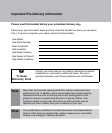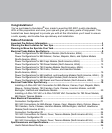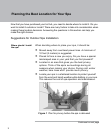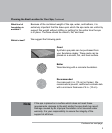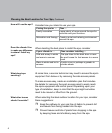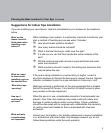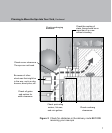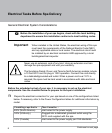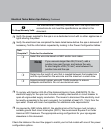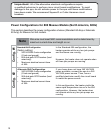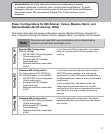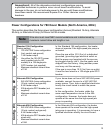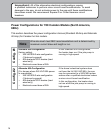
5
Planning the Best Location for Your Spa, Continued
Suggestions for Indoor Spa Installation
If you are installing your spa indoors, take into consideration your answers to the questions
below.
When installing a spa indoors, it is extremely important to build into your
plan a method of handling any excess water. Consider:
❐ How should water spills be handled?
❐ How many drains should be installed?
❐ What is the best flooring to install near the spa?
❐ If a leak occurs, can the floor handle the entire contents of the
spa?
❐ Will the furniture and walls around my spa withstand and resist
water and moisture?
❐ What provisions should I make for the ceiling and structures that
may be below the spa.
If the spa is being installed on a second story or higher, consult a
structural engineer to discuss the best way to support the spa. Special
attention is needed to plan for a spa installed on a balcony or roof.
Most spa servicing is performed on the spa equipment that is located
behind the panels of the spa. It is important to install the spa to allow
easy access to the spa equipment.
When the spa is in use, considerable amounts of moisture/water are
present. Over time, this moisture may cause mold and mildew and
damage to certain surfaces and/or surroundings. Proper ventilation
should be discussed with an engineer who understands the necessity
of venting moist and heated air that is associated with chemical
emissions.
Consult your local state or city building ordinances to ensure installation
is in accordance with local codes. Any damage caused if you do not
follow these guidelines voids the spa’s warranty.
What are the
issues I need to
think about when
installing a spa
indoors?
What do I need
to know about
installing a spa on
the second oor.
What about spa
servicing?
How can I
ventilate the
spa area?
What warranty
considerations
are important?




